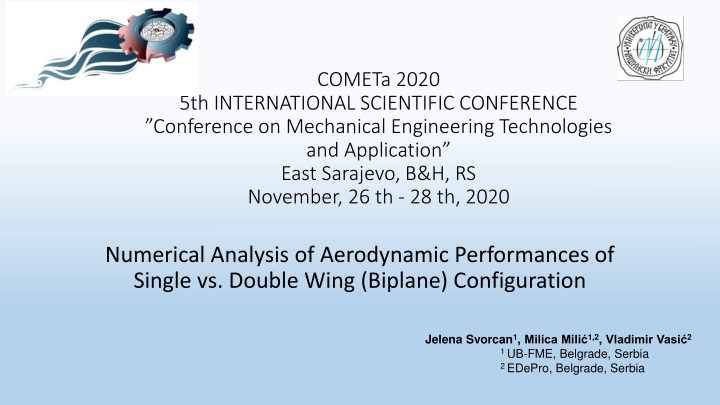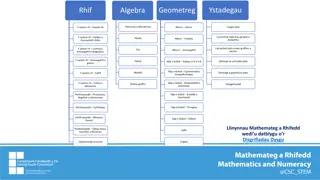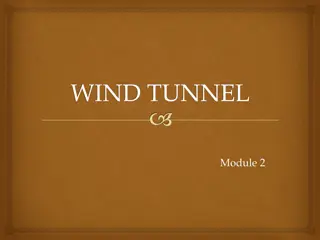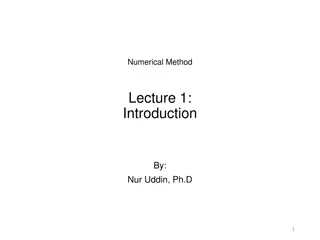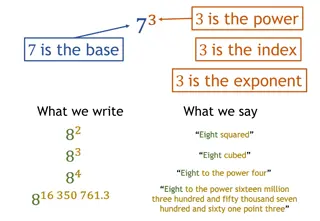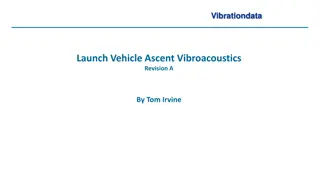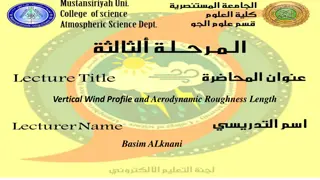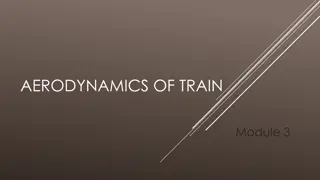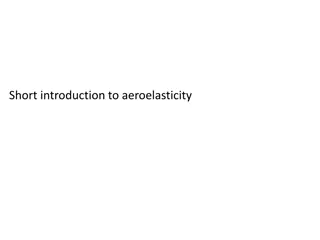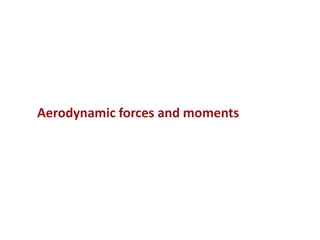Numerical Analysis of Aerodynamic Performances in Biplane Configuration
This paper presents a numerical investigation comparing single versus double wing (biplane) configurations for aerodynamic performances. Geometric models and numerical analyses were conducted, providing insights into the advantages and complexities of biplane wings. The study utilized computational fluid dynamics simulations to study the aerodynamic characteristics of different wing configurations.
Download Presentation

Please find below an Image/Link to download the presentation.
The content on the website is provided AS IS for your information and personal use only. It may not be sold, licensed, or shared on other websites without obtaining consent from the author.If you encounter any issues during the download, it is possible that the publisher has removed the file from their server.
You are allowed to download the files provided on this website for personal or commercial use, subject to the condition that they are used lawfully. All files are the property of their respective owners.
The content on the website is provided AS IS for your information and personal use only. It may not be sold, licensed, or shared on other websites without obtaining consent from the author.
E N D
Presentation Transcript
COMETa 2020 5th INTERNATIONAL SCIENTIFIC CONFERENCE Conference on Mechanical Engineering Technologies and Application East Sarajevo, B&H, RS November, 26 th - 28 th, 2020 Numerical Analysis of Aerodynamic Performances of Single vs. Double Wing (Biplane) Configuration Jelena Svorcan1, Milica Mili 1,2, Vladimir Vasi 2 1UB-FME, Belgrade, Serbia 2 EDePro, Belgrade, Serbia
Contents Introduction Geometric Models Numerical Analysis Results and Discussion Conclusions
Introduction Light, utility and commercial aircrafts can be extremely useful and popular for shorter distances In order to reduce the total cost, new (and old) aerodynamic concepts are constantly being investigated (reviewed) The idea of biplane wings dates back to the beginning of XX century Biplane is compact and enables smaller stalling speeds However, due to the complex aerodynamic environment further analyses are always necessary Paper presents the numerical investigation and comparison of several biplane configurations
Geometric Models Mono- vs. biplane wings were modeled, analyzed and compared Both assumed infinite, rectangular, untwisted wings whose cross-section is the laminar airfoil NACA 651-412 (chosen for its excellent aerodynamic characteristics) Horizontal and vertical distances are: stagger s and gap g Relative stagger s/c= [ 0.5, 0, 0.5] Relative gap g/c = 0.5
Numerical Analysis Large computational domain (consisting of a semi-circle and a rectangle) stretches around the airfoil(s) Generated meshes are hybrid unstructured (after a mesh convergence study, meshes of approximately 70000 and 125000 cells for mono- and biplane, respectively, were adopted)
Numerical Analysis Flow computations were realized in engineering software package ANSYS Fluent by finite volume method Flow was considered to be steady, planar, incompressible and viscous RANS equations were closed by the 4-equation transitional shear stress transport (SST) model BC: velocity inlet + pressure outlet, no-slip walls Pressure-based solver with SIMPLEC coupling scheme, 2nd order schemes Computations were performed until reaching the converged values of aerodynamic coefficients, usually 5000-20000 iterations
Results and Discussion Numerical approach was validated by comparing numerical and experimental results obtained on a monoplane wing at 3 MRe
Results and Discussion Aerodynamic coefficients vs. angle-of-attack computed on mono- and biplane wings are illustrated below
Results and Discussion Velocity contours at = 8 around 3 models are illustrated below
Results and Discussion Division of the aerodynamic loads between biplane wings is illustrated below
Conclusions Overall, no biplane configuration can outperform the monoplane wing of equivalent wetted surface with respect to global aerodynamic coefficients However, the benefits of biplanes are load distribution and compact design The biplane with s/c = 0.5 (highest stagger) achieves the highest lift coefficient but at the smallest critical angle From the drag perspective, biplane with s/c = 0.5 performs better at lower , while biplane with s/c= 0.5 is more appropriate at medium Both positive and negative stagger increases lift-to-drag ratio of biplane wings
Thank You for Your Attention! Contact: jsvorcan@mas.bg.ac.rs
